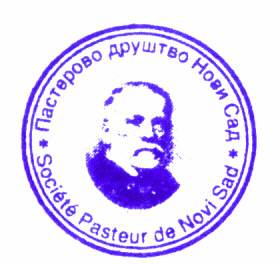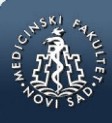md-medicaldata
Main menu:
- Naslovna/Home
- Arhiva/Archive
- Godina 2024, Broj 1
- Godina 2023, Broj 3
- Godina 2023, Broj 1-2
- Godina 2022, Broj 3
- Godina 2022, Broj 1-2
- Godina 2021, Broj 3-4
- Godina 2021, Broj 2
- Godina 2021, Broj 1
- Godina 2020, Broj 4
- Godina 2020, Broj 3
- Godina 2020, Broj 2
- Godina 2020, Broj 1
- Godina 2019, Broj 3
- Godina 2019, Broj 2
- Godina 2019, Broj 1
- Godina 2018, Broj 4
- Godina 2018, Broj 3
- Godina 2018, Broj 2
- Godina 2018, Broj 1
- Godina 2017, Broj 4
- Godina 2017, Broj 3
- Godina 2017, Broj 2
- Godina 2017, Broj 1
- Godina 2016, Broj 4
- Godina 2016, Broj 3
- Godina 2016, Broj 2
- Godina 2016, Broj 1
- Godina 2015, Broj 4
- Godina 2015, Broj 3
- Godina 2015, Broj 2
- Godina 2015, Broj 1
- Godina 2014, Broj 4
- Godina 2014, Broj 3
- Godina 2014, Broj 2
- Godina 2014, Broj 1
- Godina 2013, Broj 4
- Godina 2013, Broj 3
- Godina 2013, Broj 2
- Godina 2013, Broj 1
- Godina 2012, Broj 4
- Godina 2012, Broj 3
- Godina 2012, Broj 2
- Godina 2012, Broj 1
- Godina 2011, Broj 4
- Godina 2011, Broj 3
- Godina 2011, Broj 2
- Godina 2011, Broj 1
- Godina 2010, Broj 4
- Godina 2010, Broj 3
- Godina 2010, Broj 2
- Godina 2010, Broj 1
- Godina 2009, Broj 4
- Godina 2009, Broj 3
- Godina 2009, Broj 2
- Godina 2009, Broj 1
- Supplement
- Galerija/Gallery
- Dešavanja/Events
- Uputstva/Instructions
- Redakcija/Redaction
- Izdavač/Publisher
- Pretplata /Subscriptions
- Saradnja/Cooperation
- Vesti/News
- Kontakt/Contact
 Pasterovo društvo
Pasterovo društvo
- Disclosure of Potential Conflicts of Interest
- WorldMedical Association Declaration of Helsinki Ethical Principles for Medical Research Involving Human Subjects
- Committee on publication Ethics
CIP - Каталогизација у публикацији
Народна библиотека Србије, Београд
61
MD : Medical Data : medicinska revija = medical review / glavni i odgovorni urednik Dušan Lalošević. - Vol. 1, no. 1 (2009)- . - Zemun : Udruženje za kulturu povezivanja Most Art Jugoslavija ; Novi Sad : Pasterovo društvo, 2009- (Beograd : Scripta Internacional). - 30 cm
Dostupno i na: http://www.md-medicaldata.com. - Tri puta godišnje.
ISSN 1821-1585 = MD. Medical Data
COBISS.SR-ID 158558988
KVALITET FIZIČKOG FUNKCIONISANJA KOD ŽENA U POSTMENOPAUZI SA SMANJENOM MINERALNOM KOŠTANOM GUSTINOM/
QUALITY OF PHYSICAL FUNCTIONING IN POSTMENOPAUSAL WOMEN WITH REDUCED BONE MINERAL DENSITY
Authors
Milica Stanić1, Karmela Filipović1,2, Jelena Zvekić-Svorcan1,2, Rastislava Krasnik1,3, Nataša Nenadov1,4, Aleksandra Mikov1,3
1Univerzitet u Novom Sadu, Medicinski fakultet Novi Sad, Srbija
2Specijalna bolnica za reumatske bolesti Novi Sad, Srbija
3Klinika za dečju habilitaciju i rehabilitaciju. Institut za zdravstvenu zaštitu dece i omladine Vojvodine, Novi Sad, Srbija
4Dom „Veternik“ Veternik, Srbija
UDK: 613-056.24:616.71-007.234(497.11)"2017"
616.71-007.234-083
The paper was received 02.01.2018. Accepted: 22.01.2018.
Rad primljen 02.01.2018. Rad prihvaćen: 22.01.2018.
Corresponding author/ Autor za korespodenciju:
Milica Stanić
Medicinski fakultet Novi Sad.
Univerzitet u NovomSadu, Srbija.
Tel: +381645060885
e-mail: 610006@mf.uns.ac.rs
Sažetak
UVOD: Osteoporoza je skeletna sistemska bolest koja se karakteriše smanjenom mineralnom koštanom gustinom (MKG) i pogoršanjem mikroarhitekture koštanog tkiva. Osteoporoza negativno utiče na kvalitet života pacijenata, ograničavajući njihove aktivnosti dnevnog života.
CILJ: Ispitati kvalitet fizičkog funkcionisanja kod žena u postmenopauzi koje imaju smanjenu mineralnu koštanu gustinu.
MATERIJAL I METODE: Prospektivna studija preseka obuhvatila je 190 ispitanica, starosti ≥50 godina, kojima je osteodenzimetrijski pregled rađen u Specijalnoj bolnici za reumatske bolesti u Novom Sadu, Srbija. Studija je sprovedena od 24.2.2017. do 3.4.2017. godine i sve ispitanice potpisale su informisani pristanak o uključenju u studiju.
Svima je merena mineralna koštana gustina na dve regije od interesa, a su rezultati interpretirani prema definiciji osteoporoze. Svim ispitanicama su postavljena identična pitanja iz upitnika sastavljenog od strane ispitivača i sve su popunjavale Upitnik za procenu kvaliteta života Qualeffo 41-srpska verzija. Analizirana je povezanost posmatranih varijabli sa kvalitetom fizičkog funkcionisanja.
REZULTATI: Prosečna starosna dob ispitanica bila je 67,3±7,65 godina. Skoro polovina ispitanica pripadala je grupi prekomerno uhranjenih (48,4%). Statistički značajna razlika postoji između ispitanica različite starosne dobi (F=10,41, p<0,001) i indeksa telesne mase (F=2,75, p<0,05) kada se radi o kvalitetu fizičkog funkcionisanja. Ispitanice koje imaju niži nivo obrazovanja (F= 5,67, p=0,001) i nisu u radnom odnosu, imaju lošiji kvalitet fizičkog funkcionisanja (F=8,04, p<0,01).
ZAKLJUČAK: Ispitanice starije životne dobi, pothranjene, sa nižim vrednostima mineralne koštane gustine, pretrpljenim prelomima na malu traumu i lošijim socio-demografskim karakteristikama, imaju lošiji kvalitet života, posmatrajući fizičko funkcionisanje.
Ključne reči:
kvalitet života, mineralna koštana gustina, žene u postmenopauzi
Abstract
INTRODUCTION: Osteoporosis is a systemic skeletal disease characterized by reduced bone mineral density (BMD) and deterioration of bone tissue microarchitecture. Osteoporosis negatively affects the quality of life of patients, limiting their activities of daily living.
AIM: To evaluate the quality of physical functioning in postmenopausal women who have reduced bone mineral density.
MATERIAL AND METHODS: A prospective cross-sectional study included 190 subjects, aged ≥50 years, referred for osteodensitometric test at the Special Hospital for Rheumatic Diseases in Novi Sad, Serbia. The study was conducted from 24.02. 2017. to 03.04. 2017. and all respondents signed an informed consent to be included in the study.
All of them were measured by BMD of the two regions of interest, and the results were interpreted according to the current definition of osteoporosis.
All of the respondents were asked identical questions on the questionnaire compiled by the examiner, and they filled out the Serbian version of Questionnaire for Assessment of Quality of Life (QUALEFFO-41 serb vers.). We analyzed the correlation between the observed variables and the quality of physical functioning.
RESULTS: The average age of respondents was 67.3 ± 7.65 years. Almost half of the respondents belonged to a group of over-weighted patients (48.4%). There is a statistically significant difference between the subjects from different age groups (F= 10.41, p<0.001) and body mass index (F= 2.75, p<0.05) in terms of the quality of the physical functioning. The subjects that have a lower level of education (F= 5.67, p=0.001), and aren’t employed, have the worse quality of physical functioning (F=8.04, p<0.01).
CONCLUSION: Elderly subjects, malnourished, with lower values of bone mineral density, who suffered fractures on a small trauma and with worse socio-demographic characteristics, have a poorer quality of life, observing physical functioning.
Key words:
quality of life, bone mineral density, postmenopausal women
Reference
- Kanis JA, McCloskey EV, Johansson H, Cooper C, Rizzoli R, Reginster Y. European guidance for the diagnosis and management of osteoporosis in postmenopausal women. Osteoporos Int. 2013;24(1):23-57.
- Jelić Đ, Stefanović D, Petronijević M, Andjelić Jelić M. Zasto je dvostruka apsorpciometrija X-zraka zlatni standard u dijagnostici osteoporoze. Vojnosanitpregl. 2008;65(12):919-22.
- Cosman F, de Beur SJ, LeBoff MS, Lewiecki EM,Tanner B, Randall S, et al. Clinician’s Guide to Prevention and Treatment of Osteoporosis. Osteoporosis Int. 2014;25(10):2359-81.
- Office of the Surgeon General (US). Bone Health and Osteoporosis: A Report of the Surgeon General. Rockville (MD): Office of the Surgeon General (US); 2004. 8, Assessing the Risk of Bone Disease and Fracture. Available from: https://www.ncbi.nlm.nih.gov/books/NBK45525/
- Vasić J, Gojković F, Zvekić-Svorcan J, Ćulafić-Vojinović V, Elez J, Filipović K. The most common mistakes in bone mineral density testing with DXA method. MD-Medical Data 2013;5(3):271-8.
- Bączyk G, Opala T, Kleka P. Quality of life in postmenopausal women with reduced bone mineral density: psychometric evaluation of the Polish version of QUALEFFO-41. Archives of Medical Science: AMS. 2011;7(3):476-485.
- Madureira M, Ciconelli R, Pereira, R. Quality of life measurements in patients with osteoporosis and fractures. Clinics. 2012; 67(11):1315-20.
- De Oliveira Ferreira N, Arthuso, M, Da Silva R, Pedro A, Neto A, Costa-Paiva, L. Quality of life in women with postmenopausal osteoporosis: Correlation between QUALEFFO 41 and SF-36. Maturitas. 2009: 62(1):85-90.
- Tadić I, Vujasinović SN, Tasić L,Stevanović D, Dimić A, Stamenković B, et al. Validation of the osteoporosis quality of life questionnaire QUALEFFO-41 for the Serbian population. Health and Quality of Life Outcomes. 2012;10(74):74-82.
- Stefanović D, Knežević B, Glišic B, Ćirković M. Osteoporoza. Med Data Rev.2010;2(4): 357-60.
- Turkulov V, Madle-Samardžija N, Nićiforović-Šurković O, Gavrančić Č. Demografski aspekti starenja. Medicinski pregled. 2007; 60(5-6):247-50.
- Looker AC, Borrud LG, Dawson-Hughes B, Shepherd JA, Wright NC. Osteoporosis or low bone mass at the femur neck or lumbarspine in older adults: United States,2005–2008. NCHS Data Brief. 2012;93(2):1-8.
- Kamiyama S, Kobayashi S, Abe S, Takahashi E, Wakamatsu E, Kurashina T. Osteoporosis Prevalence and Nutritional Intake among the People in Farm, Fishing and Urban Districts. The Tohoku Journal of Experimental Medicine. 1972;107(4):387-94.
- Oleksik A, Lips P, Dawson A, Minshall M, Shen W, Cooper C et al. Health-Related Quality of Life in Postmenopausal Women With Low BMD With or Without Prevalent Vertebral Fractures. Journal of Bone and Mineral Research. 2000;15(7):1384-92.
- Paschalis E, Fratzl P, Gamsjaeger S, Hassler N, Brozek W, Eriksen E et al. Aging Versus Postmenopausal Osteoporosis: Bone Composition and Maturation Kinetics at Actively-Forming Trabecular Surfaces of Female Subjects Aged 1 to 84 Years. Journal of Bone and Mineral Research. 2015;31(2):347-57.
- Štrangar E, Zvekić-Svorcan J. Informisanost o osteoporozi i motivisanost pacijenata za lečenje. MD-Medical Data. 2015;7(2):111-7.
- Piao H-H, He J, Zhang K, Tang Z. A cross-sectional study to estimate associations between education level and osteoporosis in a Chinese postmenopausal women sample. International Journal of Clinical and Experimental Medicine. 2015;8(11):21014-23.
- F, Rostom S, Bennani L, Abouqal R, Hajjaj-Hassouni N .Educational level and osteoporosis risk in postmenopausal Moroccan women: a classification tree analysis.Allali Clin Rheumatol. 2010; 29(11):1269-75.
- De Oliveira Ferreira N, da Silva R, Arthuso M, Pinto-Neto A, Caserta N, Costa-Paiva L. Prevalence of vertebral fractures and quality of life in a sample of postmenopausal Brazilian women with osteoporosis. Archives of Osteoporosis. 2012;7(1-2):101-6.
- Pinheiro M, Ciconelli R, Martini L, Ferraz M. Clinical risk factors for osteoporotic fractures in Brazilian women and men: the Brazilian Osteoporosis Study (BRAZOS). Osteoporosis International. 2008;20(3):399-408.
- Compston J, Flahive J, Hosmer D, Watts N, Siris E, Silverman S et al. Relationship of Weight, Height, and Body Mass Index With Fracture Risk at Different Sites in Postmenopausal Women: The Global Longitudinal Study of Osteoporosis in Women (GLOW). Journal of Bone and Mineral Research. 2014;29(2):487-93.
- Sadat A, Habdan A, Mulhim A, Hassan E. Bone mineral density among postmenopausal Saudi women. Saudi Med J. 2004;25(11):1623-5.
- Thulkar J,Singh S. Overview of research studies on osteoporosis in menopausal women since the last decade. Journal of Mid-life Health. 2015;6(3):104-7.
- Sioka C, Fotopoulos A, Georgiou A, Xourgia X, Papadopoulos A, Kalef-Ezra J. Age at menarche, age at menopause and duration of fertility as risk factors for osteoporosis. Climacteric. 2010;13(1):1-9.
- Zvekić-Svorcan J, Janković T, Filipović K, Gojkov-Žigić O, Tot-Vereš K, Subin-Teodosijević S. Connection of menopause onset and duration on the level of mineral bone density. MD-Medical Data 2013;5(3):217-21.
- Bączyk G, Samborski W, Jaracz K. Evaluation of the quality of life of postmenopausal osteoporotic and osteopenic women with or without fractures. Archives of Medical Science. 2016;12(4):819-27.
- Klimo A. T skor i klinički faktori rizika u nastanku osteoporotskih preloma. MD-Medical Data 2011;3(4):361-5.
- Palacios S, Neyro J, Fernández de Cabo S, Chaves J, Rejas J. Impact of osteoporosis and bone fracture on health-related quality of life in postmenopausal women. Climacteric. 2013;17(1):60-70.
- Silverman S, Minshall M, Shen W, Harper K, Xie S. The relationship of health-related quality of life to prevalent and incident vertebral fractures in postmenopausal women with osteoporosis: Results from the Multiple Outcomes of Raloxifene Evaluation Study. Arthritis & Rheumatism. 2001;44(11):2611-9.
- Oleksik AM, Ewing S, Shen W, van Schoor NM, Lips P. Impact of incident vertebral fractures on health related quality of life (HRQOL) in postmenopausal women with prevalent vertebral fractures. Osteoporos Int. 2005;16(8):861-70.
- Vasić J, Gojković F, Zvekić-Svorcan J, Nikčević Lj, Kulević I, Janković T. The incidence and level of osteoporotic vertebral fractures in relation to age. MD-Medical Data. 2013;5(4):335-41.
PDF Stanić M. et al • MD-Medical Data 2018;10(1): 017-024
 Medicinski fakultet
Medicinski fakultet